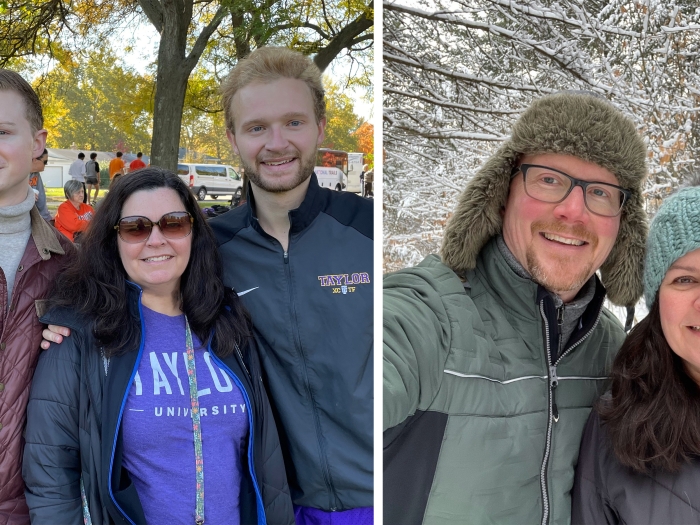For one of the first times in Michigan, a woman's recurring bleed after a brain aneurysm procedure is treated using the smallest device possible
5:00 AM
Author |

When 77-year-old Lucy Kolansinski experienced a recurrence following a prior ruptured brain aneurysm, the neurointerventional team at University of Michigan Health was armed with the right tool: one of the smallest flow diverter devices available in the United States
The U-M Health neurointerventional team was among the first to use the Medtronic 4th Generation Pipeline™ Vantage flow diverter.
The device is a soft, flexible mesh tube placed in the blood vessel where an aneurysm has formed.
The goal is to reroute blood flow away from the aneurysm to prevent another rupture.
The beginning of a health scare
Kolansinski’s initial health scare happened in September 2023 near her home in the small town of Curtis in the Upper Peninsula of Michigan.
She recalls feeling something wasn’t right, and then she lost consciousness.
She was taken by ambulance to her local hospital where imaging revealed a rare brain aneurysm in the pericallosal artery, located in the middle of the brain.
From this main artery, blood is routed to smaller branches within the brain.
The severity of her condition would require the expertise of the neurointerventional team at U-M Health.
Air-lifted to Ann Arbor, Kolansinski’s burst blood vessel was successfully treated using a minimally invasive procedure known as endovascular coiling.
During the procedure, a coil-type device is threaded through a blood vessel up to the freshly burst brain aneurysm to stop it from bleeding again.
“This development of technology to enable endovascular treatment of a brain aneurysm has changed the entire field of cerebrovascular neurosurgery.”
— Neeraj Chaudhary, M.D.
The coiling procedure carries a lower risk than the formerly traditional open surgical method known as clipping.
Coiling has become a preferred method for treating certain patients suffering a major hemorrhagic stroke (ruptured brain aneurysm) or an unruptured brain aneurysm, says U-M Health neurointerventionalist Neeraj Chaudhary, M.D.
“This development of technology to enable endovascular treatment of a brain aneurysm has changed the entire field of cerebrovascular neurosurgery,” said Chaudhary.
Complications
While coiling is now the preferred treatment, there exists a risk of future bleeding, notes Chaudhary.
“Three to six months after a coiling procedure, we do imaging to see if there is refilling in the area of the aneurysm.”
For Kolansinski, follow up imaging revealed just that: the aneurysm treated with the coil was refilling.
“Because of her prior rupture, there’s a risk of additional bleeding of the aneurysm,” said Chaudhary.
“So, the plan was to treat the small parent vessel from where the patient’s aneurysm arose.”
The right expertise, the most advanced tools
To accomplish this, the team would rely on Medtronic’s smallest flow diverter on the market in the U.S.
Using this 4th generation device would be a first for the team.
“With this endovascular procedure, we are working from inside the blood vessel. We go up with very small microcatheters to deploy the flow diverter, which slows down blood flow into the aneurysm while keeping the main parent vessel open. These microcatheters enable us to get further into the small blood vessels in the brain to place the flow diverter,” Chaudhary said.
Chaudhary stresses the critical difference this new technology makes.

“Treatment has changed to the point that more than 70% of aneurysms are now treated from inside the blood vessels. A patient needs to go to a center with special neurointerventional expertise in image guidance to treat brain blood vessel disease.”
He explains that his team’s image-guidance capabilities using smaller and smaller devices is only optimizing patient outcomes.
“We are able to better understand aneurysm healing to determine the best treatment for each patient.”
Kolansinski is thankful for the expertise at U-M Health.
The long distance she’ll travel from the Upper Peninsula for her next round of follow up imaging in the spring is well worth it, she says.

Explore a variety of health care news & stories by visiting the Health Lab home page for more articles.

Department of Communication at Michigan Medicine

Clinical Professor
Want top health & research news weekly? Sign up for Health Lab’s newsletters today!





